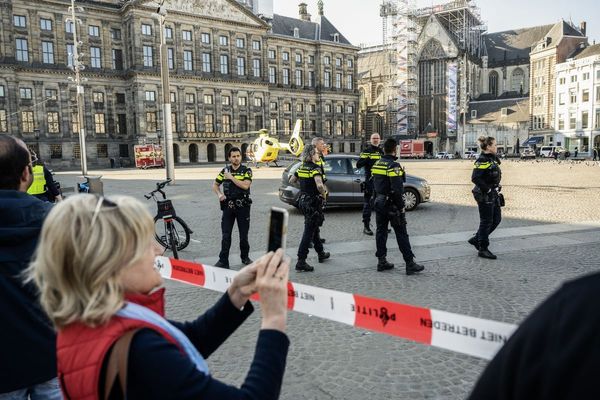
The agent, Paola Comin, didn't provide details. Lollobrigida had surgery in September to repair a thigh bone broken in a fall. She returned home and said she had quickly resumed walking, as reported by AP.
A drawn portrait of the diva graced a 1954 cover of Time magazine, which likened her to a “goddess" in an article about Italian movie-making. More than a half-century later, Lollobrigida still turned heads with her brown, curly hair and statuesque figure, and preferred to be called an actress instead of the gender-neutral term actor.
“Lollo," as she was lovingly nicknamed by Italians, began making movies in Italy just after the end of World War II, as the country began to promote on the big screen a stereotypical concept of Mediterranean beauty as buxom and brunette.
Besides “The World’s Most Beautiful Woman" in 1955, career highlights included Golden Globe-winner “Come September," with Rock Hudson; “Trapeze;" “Beat the Devil," a 1953 John Huston film starring Humphrey Bogart and Jennifer Jones; and “Buona Sera, Mrs. Campbell," which won Lollobrigida Italy’s top movie award, a David di Donatello, as best actress in 1969.
In Italy, she worked with some of the country’s top directors following the war, including Mario Monicelli, Luigi Comencini, Pietro Germi and Vittorio De Sica.
Two of her more popular films at home were Comencini’s “Pane Amore e Fantasia" ("Bread, Love and Dreams") in 1953, and the sequel a year later, “Pane Amore e Gelosia" ("Bread, Love and Jealousy"). Her male foil was Vittorio Gassman, one of Italy’s leading men on the screen.
Born to a working class family in a poor mountainous area east of Rome, she studied sculpture then got her break in the film world after finishing third in the 1947 Miss Italia beauty contest. (The winner that year was Lucia Bose.)
When she stopped making films, Lollobrigida developed new careers as a photographer and sculptor and was also a goodwill ambassador for the United Nations Children's Fund (UNICEF), and its Food and Agriculture Organisation (FAO).
Between 1972 and 1994 she published six books of her photographs, including Italia Mia (My Italy), The Philippines, and the Wonder of Innocence, photographs of and for children.
With her camera, she roamed the world from what was then the Soviet Union to Australia. In 1974, Fidel Castro hosted her as a guest in Cuba for 12 days as she worked on a photo reportage.
Lollobrigida was born on July 4, 1927 in Subiaco, a picturesque hill town near Rome, where her father was a furniture maker. Lollobrigida began her career in beauty contests, posing for the covers of magazines and making brief appearances in minor films. Producer Mario Costa plucked her from the streets of Rome to appear on the big screen.
Eccentric mogul Howard Hughes eventually brought Lollobrigida to the United States, where she performed with some of Hollywood’s leading men of the 1950s and 60s, including Frank Sinatra, Sean Connery, Burt Lancaster, Tony Curtis and Yul Brynner.
Over the years, her co-stars also included Europe’s most dashing male stars of the era, among them Louis Jourdan, Fernando Rey, Jean-Paul Belmondo, Jean-Louis Trintignant and Alec Guinness.
While Lollobrigida played some dramatic roles, her sex symbol image defined her career, and her most popular characters were in lighthearted comedies such as the “Bread, Love" trilogy.
With lush eyelashes and thick, brown curls framing her face, Lollobrigida started a hairstyle rage in the 1950s known as the “poodle cut." Gossip columnists commented on alleged rivalries between her and Sophia Loren, another Italian film star celebrated for her beauty,
In middle age, Lollobrigida’s romance with a man 34 years her junior, Javier Rigau, from Barcelona, Spain, kept gossip pages buzzing for years.
“I have always had a weakness for younger men because they are generous and have no complexes," the actress told Spain’s “Hola" magazine. After more than 20 years of dating, in 2006, the then-79-year-old Lollobrigida announced that she would marry Rigau, but the wedding never happened.
"All my life I wanted a real love, an authentic love, but I have never had one. No one has ever truly loved me. I am a cumbersome woman," she told an interviewer when she was 80.
Her first marriage, to Milko Skofic, a Yugoslavia-born doctor, ended in divorce in 1971.
In the last years of her life, Lollobrigida's name more frequently appeared in articles by journalists covering Rome's courts, not the glamour scene, as legal battles were waged over whether she had the mental competence to tend to her finances.
On her website, Lollobrigida recalled how her family lost its house during the bombings of World War II and went to live in Rome. She studied sculpture and painting at a high school dedicated to the arts, while her two sisters worked as movie theater ushers to allow her to continue her studies.
In 2013, when she was 85, an auction of her jewellery by Sotheby's in Geneva fetched $4.9 million and set a record for a pair of diamond and pearl earrings, which sold for $2.37 million. The proceeds went to stem cell research.
"Jewels are meant to give pleasure and for many years I had enormous pleasure wearing mine," she said. "Selling my jewels to help raise awareness of stem cell therapy, which can cure so many illnesses, seems to me a wonderful use to which to put them."
(With inputs from agencies)







